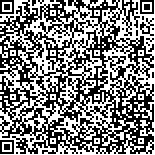下载中心
优秀审稿专家
优秀论文
相关链接
摘要

随着高分四号(GF-4号)地球同步卫星的发射与初步应用,其兼顾高空间与高时间分辨率的优势在同类型卫星中独具特色,中国对地静止卫星影像的研究也越来越受到重视。为了对GF-4号卫星在轨探测能力进行评估,掌握日内可用影像数据时段以合理安排成像时间提高卫星使用效率与延长寿命,有必要对以暗像元为代表的典型地物(如水体)进行辐射能模拟与信噪比研究。基于MODTRAN辐射传输模型,将香港沿岸水体作为暗目标,对GF-4号静止卫星多光谱遥感全色谱段以及蓝、绿、红、近红外4个多光谱谱段进行标准大气条件下入瞳处辐亮度的模拟,并利用在轨影像进行验证。在此基础上去除大气背景辐射干扰计算有效信噪比,并分别选取一年中春分、夏至、秋分、冬至,4个典型日的模拟数据进行质量分析,探讨一天连续观测中卫星能够获取高质量水体影像的有效时段,尤其是对晨昏时段临界微弱信号的敏感性进行分析。结果表明,夏至、冬至日内表观辐亮度峰值依次为59.26 W/(m2·sr·μm)、56.20 W/(m2·sr·μm),均出现在蓝光谱段;夏至、冬至最高地表有效辐亮度分别为17.52 W/(m2·sr·μm)、12.13 W/(m2·sr·μm),出现在蓝光谱段,但差距有所缩小。这是由于入瞳处辐射主要受到大气背景辐射的影响,以夏至正午为例,各谱段受背景辐射影响程度达到49.7%—75.5%。为规避背景辐射噪声,提出适用于陆表观测的有效辐射百分比的概念,推导出传统信噪比、有效信噪比以及有效辐射百分比之间的转换关系式,揭示了背景辐射对成像信噪比干扰的定量形式,提出有效信噪比计算方法,并以此为依据,以香港海岸带水体为目标,建立了相应有效信噪比对应时刻表。经计算香港海岸带水体一年中卫星全天有效信噪比均低于50 dB,夏至、冬至最高地表有效信噪比分别为41.0 dB、38.2 dB,其中蓝光谱段模拟效果最差,近红外、全色谱段结果较好。为保障影像质量,以香港海岸带水体有效信噪比35 dB为阈值确定影像获取时段,分别为夏至日北京时间7:49—17:01,冬至日北京时间9:28—15:07。
With the launch and preliminary application of the GF-4 geostationary satellite, the advantages of having both high spatial and temporal resolution enable it to have its own feature in the same type of satellites, and China has attached more importance to the research on geostationary satellite images. To evaluate the on-orbit detection capability of GF-4, thorough assessment is essential to grasp the available time of the image data on the same day and reasonably arrange the boot time to improve satellite use efficiency and prolong its life span. This objective can be accomplished by realistic radiation simulation of the imagery data and signal-to-noise ratio (SNR) study with typical objects represented by dark pixels (such as water). Based on the given spectral capabilities, geometrical, and atmospheric parameters, and in combination with land surface properties (Hong Kong coastal water), the GF-4 sensor hyperspectral remote sensing in standard atmospheric conditions, including Pan wave band and blue, green, red, and NIR-four wave bands, are simulated using the radiative transmission model MODTRAN. On this basis, the interference of atmospheric path radiance is removed to calculate the effective SNR. The data of four typical time nodes in spring equinox, summer solstice, autumn equinox, and winter solstice are selected for analysis. In this way, realistically simulated hyperspectral top-of-atmosphere apparent radiance, ground effective radiance, and path radiance are obtained. The information helps identify the effective time for the satellite to obtain high-quality water images in the observation of the same day, especially analyzing the sensitivity of the critical weak signal during the dawn-dusk period. This work fills the gaps in the data quality assessment and has a positive significance to the scientific and rational use of GF-4. Results show that the highest apparent radiance values of summer solstice and winter solstice are successive at 59.26 and 56.20 W/(m2·sr·μm), respectively, all in the blue band; and the highest ground effective radiance values of summer solstice and winter solstice are 17.52 and 12.13 W/(m2·sr·μm), respectively, also in the blue band. The highest effective SNR values of the summer solstice and winter solstice are 41.0 and 38.2 dB, respectively. The simulation results of blue band are the worst, but those of NIR, green, and Pan bands are good. To ensure the image quality, the water effective SNR of 35 dB is set as a threshold value to determine the boot time. The time of image acquisition is 7:49-17:01 in summer solstice and 9:28-15:07 in winter solstice.

